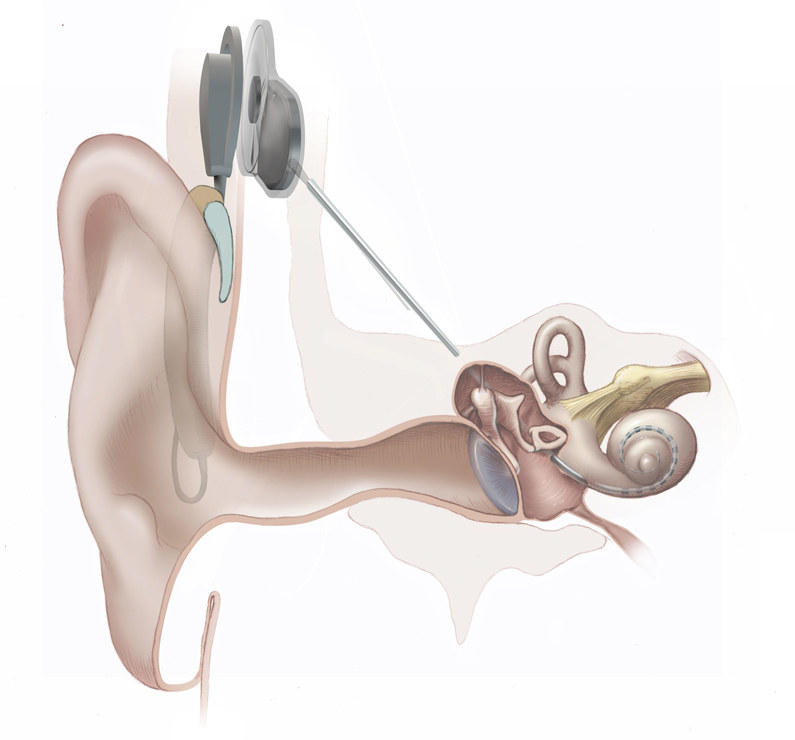Cochlear surgery at Clinical Center provides hearing to pediatric patient

In the NIH Clinical Center operating room, a surgery was performed in Fall 2018 that marked two milestones for Building 10 – the first time two cochlear (bilateral) implants were placed and the first time the surgery was performed for a pediatric patient, allowing them to hear once again. Dr. Michael Hoa, an otolaryngology surgeon-scientist with the NIH National Institute on Deafness and Other Communication Disorders (NIDCD), successfully performed the surgery, which lasted 4.5 hours. Others have previously performed cochlear implantation at the Clinical Center, but in one ear of adult patients.
"It had been over 10 years since a [single] cochlear implant surgery was performed at the Clinical Center," noted Hoa, who is a specialist in neuro-otology (the study of the anatomy and diseases of the ear). Hoa established the cochlear implant programs at both MedStar Georgetown University Hospital, where he serves as co-director of the cochlear implant program, and the Washington D.C. Veterans Affairs Medical Center. Hoa's expertise in establishing cochlear implant programs and his experience with building the multidisciplinary medical teams necessary for pediatric cochlear implant programs were essential for success.
"The clinical care team at the NIH Audiology Unit, coordinated by Dr. Kelly King, was critical to mapping out this patient's surgery and recovery program," added Hoa. He also engaged community based partners, such as the Treatment and Learning Center in Rockville, Md., and Gallaudet University in Washington D.C.
A cochlear implant is a small, electronic medical device that can help a person who is deaf or severely hard-of-hearing experience sounds. The implant consists of two parts: an external portion that sits behind the ear and a second element that is surgically placed under the skin and inserted into the cochlea in the inner ear. A cochlear implant bypasses damaged portions of the ear and directly stimulates the auditory (hearing) nerve. Signals generated by the implant are sent to the brain through the auditory nerve, which the brain recognizes as sound.
The cochlear implant surgery was conducted on a patient participating in a research protocol to treat Niemann-Pick Type C1 (NPC1) disease at the Clinical Center. NPC1 disease is a rare, progressive genetic disorder in which cholesterol and other fatty substances (lipids) accumulate inside of cells and tissues of the body damaging the brain, peripheral nervous system, liver, and other organs and tissues. The disease is often fatal - many patients with NPC1 develop debilitating problems such as trouble swallowing and walking.
"Niemann-Pick robs people of their experience of the world," said Hoa. Hoa is the consulting otologist on the protocol Hydroxypropyl Beta Cyclodextrin for Niemann-Pick Type C1 Disease which is sponsored by a Mallinckrodt Pharmaceuticals, and is being conducted by the NIH Eunice Kennedy Shriver National Institute of Child Health and Human Development and the NIH National Center for Advancing Translational Sciences with Dr. Forbes D. Porter serving.
-Donovan Kuehn